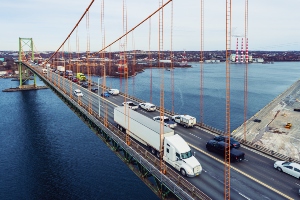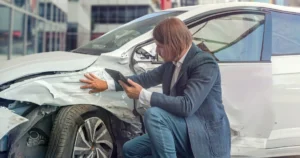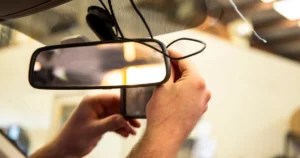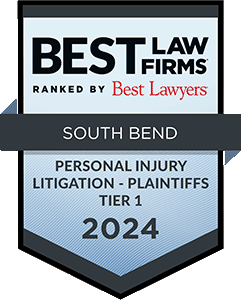South Bend bridge accidents can occur due to construction or traffic-related incidents. Understanding these factors can help you avoid such accidents and know how to respond if they happen.
Table of Contents
- Why Are South Bend Bridge Accidents More Dangerous Than Regular Crashes?
- What Factors Contribute to South Bend Accident Bridges?
- What Special Precautions Should Drivers Take on South Bend Bridges?
- Who Is Responsible When Poor Bridge Maintenance Causes a Crash?
- Contact Our Experienced Team for Legal Help
At Pfeifer, Morgan & Stesiak, our South Bend car accident attorneys are here to help you navigate the legal process after a crash on a bridge. We can help you determine your legal options so that you can pursue the compensation that you need for injuries and damages.
If we confirm you have a case, we will represent you without any upfront costs for our legal services. Our firm does not get paid unless we win your case for you.
Schedule your free consultation today: (574) 444-0741.
Why Are South Bend Bridge Accidents More Dangerous Than Regular Crashes?

Accidents on South Bend bridges are often more dangerous than regular crashes because of the unique challenges these structures present. Bridges are confined spaces with limited escape routes, which makes it harder for drivers to avoid collisions. Vehicles involved in a crash on a bridge are also at greater risk of hitting barriers or even falling into the water below.
In addition, many bridges in South Bend are elevated, which can lead to more severe injuries in the event of a crash. Bridges with narrow lanes, sharp turns and steep inclines, makes it difficult for drivers to react quickly. Furthermore, it can take emergency responders longer to reach the scene, delaying critical assistance for those involved in the accident.
What Factors Contribute to South Bend Accident Bridges?
Several factors may contribute to an accident on a bridge. Below are some of the reasons why accidents may happen on a South Bend bridge.
Weather Conditions
Some drivers may have difficulty with navigating through certain weather conditions, especially if they are not experienced drivers. Here are some weather conditions that could make it challenging for drivers to maneuver their vehicle.
- Heavy Rain: Excessive rainfall can cause flooding, making bridges dangerous to cross.
- Fog: This reduces visibility on bridges, making it more difficult for drivers to react in time to sudden changes in traffic or road conditions.
- Icy Roads: Icy conditions in the winter can cause drivers to lose control and slide on black ice.
- Heavy Snow: Snow piling up a bridge can block road signs and lane markings. Also, snow could add extra weight to the bridge structure, which could be a concern for older and less well-maintained bridges.
Bridge Structure and Design Issues
If a bridge has narrow lanes, it could be difficult for larger vehicles like trucks and SUVs to navigate.
Also, poorly maintained or structured bridges can pose a risk to drivers and could led to an accident. Bridges like Darden Road Bridge is one of the oldest bridges in St. Joseph County. If maintenance is not continued, aging bridges may become a threat to drivers.
Traffic Volume
During heavy traffic hours, bridge may have more commuters, which could lead to traffic congestion. Under these circumstances, rear-end accidents could happen, especially if drivers are distracted.
In heavy traffic, trucks may have issues with switching lanes. If they are not able to switch lanes properly, they may end up in a sideswipe collision.
What Special Precautions Should Drivers Take on South Bend Bridges?
Drivers should take extra precautions when crossing bridges in South Bend to reduce the risk of accidents. These structures present unique challenges, so being prepared for unexpected road conditions is key to staying safe. Drivers should:
- Reduce Speed: Always slow down, especially in poor weather conditions or during peak traffic times.
- Increase Following Distance: Leave extra space between your vehicle and the one ahead to allow for sudden stops or changes in speed.
- Stay Alert: Watch for road signs indicating ice, fog or other hazards specific to bridge crossings.
- Use Headlights: Turn on headlights in low visibility conditions, such as fog or heavy rain, to make your vehicle more visible to others.
- Avoid Sudden Lane Changes: Bridges can have narrow lanes and tight spaces, so avoid sudden moves that might cause you to lose control.
Who Is Responsible When Poor Bridge Maintenance Causes a Crash?
When poor bridge maintenance leads to a crash, it can be difficult to determine responsibility. Understanding who is liable depends on several factors, including the ownership and upkeep of the bridge and the specific maintenance issues involved.
Government Agencies
Local, state and federal agencies are typically responsible for maintaining public bridges. If their failure to repair or inspect a bridge contributes to an accident, they may be held liable.
Contractors and Subcontractors
In some cases, private contractors or subcontractors hired for repairs may be held accountable if poor work or oversight led to dangerous conditions on the bridge.
Other Parties
If a crash is caused by a specific defect or issue that a private entity was responsible for, such as a malfunctioning bridge component, that entity could also be found liable.
Contact Our Experienced Team for Legal Help
If you or someone you know has been involved in an accident on one of South Bend’s bridges, you may be entitled to compensation for your injuries.
At Pfeifer, Morgan & Stesiak, we are committed to helping you understand your legal options so that you can take the first step towards pursuing compensation.
Call our trusted South Bend law firm today: (574) 444-0741.











